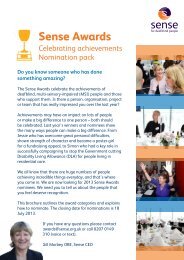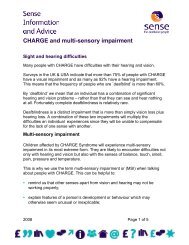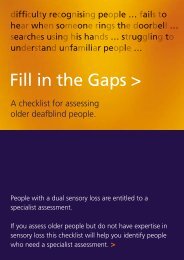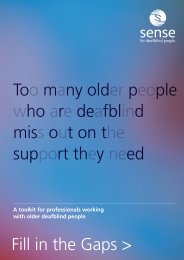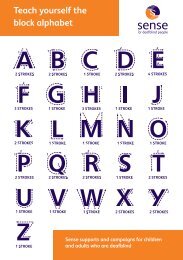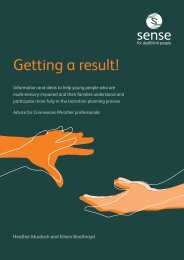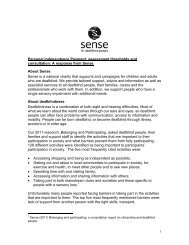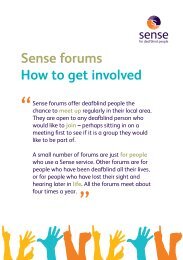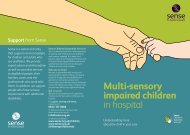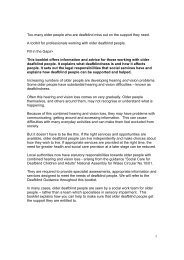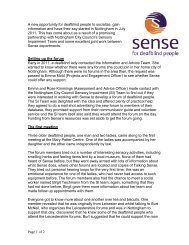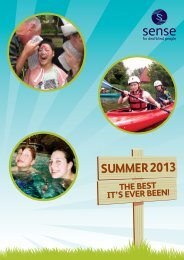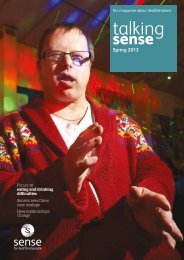MSI Unit Curriculum - Sense
MSI Unit Curriculum - Sense
MSI Unit Curriculum - Sense
Create successful ePaper yourself
Turn your PDF publications into a flip-book with our unique Google optimized e-Paper software.
Victoria School: <strong>MSI</strong> <strong>Unit</strong> <strong>Curriculum</strong>sensory function how a pupil uses their residual senses, including any sensorypreferences, the factors helping or impeding sensory use and the pupil’sunderstanding and use of the information received.signal an action or object which communicates a message.signifier something which stands for something else (eg: the spoken word‘drink’).state-driven a very early stage of development at which the pupil acts primarilyin response to internal stimuli, rather than responding to the externalenvironment. Different states include sleeping, being drowsy and being awakeand alert.structuring (interaction) setting up and maintaining conditions which help thepupil to interact (eg: setting out the photos or symbols linked to an activityunder discussion).support intervention from a staff member to help a pupil begin, continue and/or complete an activity. The intervention may be verbal, visual and/or physicaland it may be provided intermittently or continuously throughout an activity.symbol an action, sound or graphic which represents a meaning – for example,a toy jug representing ‘want a drink’; a photo representing ‘Mum’; a symbolrepresenting ‘I need time out’; the spoken or written word ‘democracy’.symbolic communication intentional communication using symbols – ie:actions, sounds or graphics which represent specific meanings. Speech, signsand rebus symbols are examples. Also known as verbal communication(distinct from vocal communication, which means communication using voice).timetable/calendar work using a calendar or timetable to plan, anticipate and/or review a period of time, from a minute to a year or more. Most usually, tooverview part or all of the current day. The calendar or timetable may useobjects, shapes, symbols, pictures, text or other modes.verbal prompts prompts using symbolic communication.visual environment the context in which a pupil uses sight, including lightinglevels, colour contrast, visual ‘clutter’ and movement (eg: people walking past).148



